|
|
|
 |
 |
 |
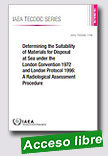 |
Determining the Suitability of Materials for Disposal at Sea under the London Convention 1972 and London Protocol 1996: A Radiological Assessment Procedure
IAEA TECDOC, 2015, 100 p.
This publication provides guidance on performing specific assessments of candidate materials for dumping at sea, to determine whether the materials are de minimis in the meaning of the Convention on the Prevention of Marine Pollution by Dumping of Wastes and Other Matter 1972 (the London Convention 1972) and the related Protocol 1996 (the
|
London Protocol 1996). It presents a detailed radiological procedure to assess doses to workers and members of the public and doses to marine flora and fauna related to the dumping of materials at sea. The procedures in this publication follow the requirements to protect the environment in the IAEA Safety Standards and in the recommendations by the International Commission of Radiological Protection. It is expected to be used by national regulatory authorities responsible for authorizing disposal at sea of candidate materials as well as by those companies and individuals applying to obtain permission to dispose these materials at sea.
Extraído de: http://www-pub.iaea.org/books/IAEABooks/10841/Determining-the-Suitability-of-Materials-for-Disposal-at-Sea-under-the-London-Convention-1972-and-London-Protocol-1996-A-Radiological-Assessment-Procedure
|
 |
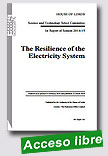 |
The Resilience of the Electricity System
House of Lords, Science and Technology Select Committee (UK), 12 March 2015, 110 p..
Modern society is vitally dependent on a reliable supply of electricity and a sustained failure in the electricity system would have dramatic consequences. It would result in a catastrophic failure of communications and of many services on which we are now heavily dependent. It would have an impact on the country’s economy and on public safety to a much greater extent than even a decade ago. The capacity
|
margin, the surplus of electricity generating capacity over demand, was reduced this winter. This provoked speculation in the media that the country might be subject to national blackouts. It was against this background that we chose to investigate the resilience of the electricity system. There has been no national blackout so far this winter, and we are not surprised. Nor do we expect the lights to go out next winter. It would take an improbable concatenation of events to put the lights out nationally. National Grid has tools at its disposal to increase capacity or reduce demand, and we are confident that it has the ability to maintain national electricity supply. As Professor Newbery and Professor Grubb put it to us: “there is no ‘cliff edge’ at which the lights go out, but rather an increasing array of options for managing tight conditions.”1 Indeed, National Grid procured extra capacity to raise the capacity margin from 4.1% to 6.1% this winter and guard against a potential shortage of electricity. It is a matter for concern, however, that this extra capacity was put in place at short notice, at considerable cost, and in a way which conflicts with the decarbonisation agenda. This should not be allowed to happen again; it is not acceptable for an advanced economy, hugely dependent on electricity, to sail so close to the wind. Moreover, demand for electricity has declined substantially since the economic crisis began. If demand had continued to grow, capacity margins would have been much tighter. The electricity market is now a managed market. The pursuit of decarbonisation makes a free market in electricity supply impossible while low-carbon sources of power are more costly than high-carbon ones. There must be clarity about roles and responsibilities across a sector which has many participants. We do not think that the Government has sufficiently informed the public that, with the present and foreseeable state of technology, it is not possible for the electricity supply to be low-cost, resilient and low-carbon all at the same time (the so-called energy trilemma). If the Government pursues decarbonisation as an objective, in line with its legal and international obligations, and at the same time seeks to ensure that power remains reliably available at all times, this is likely to mean higher electricity prices, with attendant economic and social costs, at least in the short term. We argue that it is imperative that the electricity system is viewed as a whole. It is important that an end to end approach is taken, so that complex interactions are not missed between the many component parts of the system. Adopting such an approach will be increasingly important as profound changes occur to the system. New technology is presenting huge opportunities, but also novel challenges to resilience. The projected increase in electrification of transport and heating, for instance, will increase demand and has the potential to threaten resilience. In addition, current renewables, such as wind and solar, provide an intermittent supply of electricity which will need to be balanced. The uncertainties are manifold. The Government must maintain a flexible approach and nurture a range of technologies, including electricity storage, interconnection and Demand Side Response (DSR).
Extraído de: http://www.publications.parliament.uk/pa/ld201415/ldselect/ldsctech/121/121.pdf
|
 |
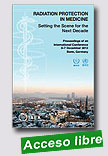 |
Radiation Protection in Medicine: Setting the Scene for the Next Decade, Proceedings of an International Conference held in Bonn, Germany, 3–7 December 2012
IAEA Proceedings Series, 2015, 429 p.
This publication presents the proceedings of the International Conference on Radiation Protection in Medicine: Setting the Scene for the Next Decade. The aims were to indicate gaps in current approaches to radiation protection in medicine; identify tools for improving radiation protection in medicine; review
|
advances, challenges and opportunities in the field; and assess the impact of the international action plan for the radiation protection of patients, in order to prepare new international recommendations. The Conference drew up the 10-point Bonn Call for Action, which identifies responsibilities of and proposes priorities for stakeholders regarding radiation protection in medicine for the next decade.
Extraído de: http://www-pub.iaea.org/books/IAEABooks/10611/Radiation-Protection-in-Medicine-Setting-the-Scene-for-the-Next-Decade-Proceedings-of-an
|
 |
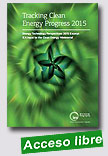 |
Published annually, the Tracking Clean Energy Progress (TCEP) report highlights how the overall development and deployment of clean energy technologies evolve, year on year. Each technology and sector is tracked against the interim 2025 2°C Scenario (2DS) targets of the IEA Energy Technology Perspectives 2015 (ETP 2015), which lays out pathways towards a sustainable energy system in 2050. This comprehensive overview examines the latest developments in
|
key clean energy technologies: Recent trends with reference to technology penetration, market creation and technology developments; Tracking progress in each technology and sector segment, which includes a quantitative evaluation on progress towards meeting the 2DS; Recommended actions which outline the measures required to overcome existing barriers to meeting the 2DS.
In 2014 renewable power generation continued to progress, the number of electric vehicles (EVs) increased rapidly, and a significant milestone for carbon capture and storage (CCS) was reached; however, the deployment rate of most clean energy technologies is no longer on track to meet 2DS targets. The overall growth rates of clean energy technologies have slowed significantly, and existing opportunities for deployment are not being exploited, preventing significant benefits from being realised. Policy certainty, incentives, regulation and international co-operation are required to meet stated ambitions and transform the global energy system.
This report is an excerpt from ETP 2015. Together these publications provide specific recommendations to governments on how to scale up deployment of these key technologies to ensure a secure, clean and competitive energy future.
Extraído de: http://www.iea.org/publications/freepublications/publication/tracking-clean-energy-progress-2015.html
|
 |
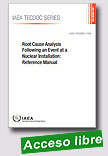 |
Root Cause Analysis Following an Event at a Nuclear Installation: Reference Manual
IAEA TECDOC, 2015, 192 p.
In the case of an event at a nuclear installation it is important to accurately determine the root causes, in order to allow corrective actions to be implemented to address them and prevent their recurrence. There are different analysis tools, techniques and methods available which can be used to evaluate the root causes of events and this publication presents a comprehensive reference manual of them and
|
allows organizations to deepen their knowledge of these instruments. In addition, it also provides new organizations with a broad overview of the root cause analysis process. The present manual is also intended to provide guidance to all organizations establishing a new process for root cause analysis, especially in countries embarking upon a nuclear power programme.
Companion CD
Extraído de: http://www-pub.iaea.org/books/IAEABooks/10626/Root-Cause-Analysis-Following-an-Event-at-a-Nuclear-Installation-Reference-Manual
|
 |
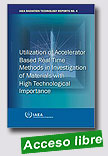
|
Utilization of Accelerator Based Real Time Methods in Investigation of Materials with High Technological Importance
IAEA Radiation Technology Reports, 2015, 104 p.
This publication presents the state of the art in the development and application of various accelerator based real time techniques. It reports examples of multidisciplinary scientific topics and challenges where application of accelerator based methods would bring significant benefits in terms of research data and further understanding of the |
scientific issues. The research activities that can profit from real time material characterizations using synchrotron radiation, neutron, ion and electron beams, and simultaneous combinations of different techniques are also briefly discussed. A recurrent theme emerging from the presented papers is that further work is needed to develop more robust and longer working life materials for energy applications.
Extraído de:
http://www-pub.iaea.org/books/IAEABooks/10490/Utilization-of-Accelerator-Based-Real-Time-Methods-in-Investigation-of-Materials-with-High-Technological-Importanc
|
 |
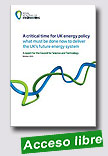 |
A critical time for UK energy policy: what must be done now to deliver the UK’s future energy system
Royal Academy of Engineering, October 2015, 36 p.
In 2010, the Royal Academy of Engineering published Generating the future, which considered scenarios for the UK’s energy system that would meet the emissions targets in the Climate Change Act 2008. In that report, the Academy came to four key conclusions about the decarbonisation of the nation’s energy system: Fundamental restructuring of the whole energy system will be unavoidable; Demand reduction across the
|
whole economy will be essential; The full suite of available or credible low carbon energy supply technologies will be needed; The scale of the engineering challenge is massive.
That report pointed out the need for a coordinated national strategy to drive the transformation, underpinned by a high degree of whole-systems thinking.
This study, undertaken at the request of the Prime Minister’s Council for Science and technology, considers the future of the energy system that now must deliver against an even greater set of challenges than we considered in 2010. UK energy policy today seeks to deliver solutions to the so-called energy ‘trilemma’ — the need for a system that is secure and affordable as well as low carbon.
The broader scope of today’s challenge brings new uncertainties that add further complexity to policy decision-making. One thing remains certain — the scale of the engineering challenge remains massive and the need for whole-systems thinking remains critical. We hope that the perspectives that the Academy has brought to this analysis will prove useful to those taking forward and integrating energy policy and informative for other readers with an interest in the engineering aspects of this critically important issue.
The challenge is great, but the engineering profession, supported by science and business, is capable of remarkable progress if given the right market and regulatory conditions.
Extraído de: http://www.raeng.org.uk/publications/reports/a-critical-time-for-uk-energy-policy
|
 |
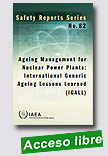 |
Ageing Management for Nuclear Power Plants: International Generic Ageing Lessons Learned (IGALL)
IAEA Safety Reports Series, 2015, 87 p.
This publication provides a common internationally agreed basis on what constitutes an acceptable ageing management programme, as well as a knowledge base on ageing management for the design of new plants, design and safety reviews, and aims to serve as a roadmap to available information on ageing management. It addresses ageing management of passive and active structures and
|
components for water moderated reactors that can have an impact, directly or indirectly, on the safe operation of the plant and that are susceptible to ageing degradation. The information provided is relevant for plants under normal operation, for plants considering long term operation, as well as for new plants including new designs. It underlines that ageing management should be implemented from the start of operation of nuclear power plants and that adequate provisions to facilitate effective ageing management should be made during the plant design, construction commissioning, operation, and decommissioning.
Extraído de: http://www-pub.iaea.org/books/IAEABooks/10665/Ageing-Management-for-Nuclear-Power-Plants-International-Generic-Ageing-Lessons-Learned-IGALL
|
 |
|
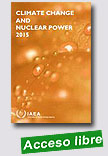
|
Climate Change and Nuclear Power 2015
IAEA Non-serial Publications, 2015, 112 p.
Climate change is one of the most important environmental challenges facing the world today. Nuclear power can make a significant contribution to reducing greenhouse gas emissions while delivering energy in the increasingly large quantities needed for growing populations and socioeconomic development. Nuclear power plants produce virtually no greenhouse gas emissions or air pollutants during their operation and only very low emissions over their entire life
|
cycle. Nuclear power fosters energy supply security and industrial development by providing electricity reliably at stable and foreseeable prices.
The accident at the Fukushima Daiichi nuclear power plant in March 2011 caused deep public anxiety and raised fundamental questions about the future of nuclear energy throughout the world. Yet, more than four years after the accident, it is clear that nuclear energy will remain an important option for many countries.
Its advantages in terms of climate change mitigation are an important reason why many countries intend to introduce nuclear power in the coming decades, or to expand existing programmes. All countries have the right to use nuclear technology for peaceful purposes, as well as the responsibility to do so safely and securely. The IAEA provides assistance and information to countries that wish to introduce nuclear power. It also provides information for broader audiences engaged in energy, environmental and economic policy making.
This report provides a comprehensive review of the potential role of nuclear power in mitigating global climate change and its contribution to other economic, energy and environmental challenges. The report also examines broader issues relevant to the climate change–nuclear energy nexus, such as costs, investments, financing, safety, waste management and non-proliferation. Recent developments in electricity generation and distribution technologies and their impacts on nuclear power are also presented.
This edition has been substantially revised relative to the 2014 report. Most sections have been completely rewritten to account for new scientific information, new analyses, and technical reports and other publications that have become available in 2015. Sections addressing issues on which the available information has not substantially changed over the past year have been omitted and will be updated if necessary in future editions. Short summaries of these sections are provided in the Appendix. Interested readers are referred to the 2013 and 2014 editions for more detailed information on nuclear energy applications beyond the power sector, the thorium option, fast reactors, fusion, competition with shale gas, new developments in small modular reactors and the implications of lifetime extensions. New sections explore emerging issues that will affect the relationship between climate change and nuclear power in the coming decades.
Extraído de: http://www-pub.iaea.org/MTCD/Publications/PDF/CCANP2015Web-78834554.pdf
|
 |
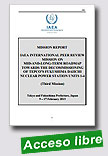 |
IAEA International Peer Review Mission on Mid-and-Long-Term Roadmap Towards Decommissioning of TEPCO's Fukushima Daiichi NPS Units 1-4 (Third Mission) (9 - 17 February 2015), Mission Report, 13 May 2015
IAEA, 13 May 2015, 58 p.
The International Atomic Energy Agency (IAEA) today released a report containing the assessment of an IAEA expert team that reviewed progress in Japan's efforts to plan and implement the decommissioning of the Fukushima Daiichi Nuclear Power Station.
|
The report is based on findings made during a 9-17 February 2015 visit to Tokyo and the Fukushima accident site by the 15-member team. The mission was the IAEA's third International Peer Review of Japan’s Mid-and-Long-Term Roadmap towards the Decommissioning of TEPCO's Fukushima Daiichi Nuclear Power Station Units 1-4.
The final report of the third mission, handed to Japanese authorities yesterday, follows the preliminary summary report that was released at the end of the mission.
Today's report states that "Japan has achieved good progress in improving its strategy and the associated plans, as well as in allocating the necessary resources towards the safe decommissioning" of Fukushima Daiichi.
"Since the previous IAEA missions, the Government of Japan and TEPCO have implemented planned measures aimed at reducing nuclear and radiological hazards on the site and safely decommissioning the plant."
The report acknowledges that the Japanese government and TEPCO had taken into account advice provided following earlier IAEA missions to enhance planning and decommissioning. The report contains advisory points on topics such as long-term radioactive waste management, measures against contaminated water and issues related to the removal of spent nuclear fuel and fuel debris.
An annex to the report contains the findings of IAEA experts who, at the request of Japan's government, visited Japan from 17 to 21 April 2015 to receive additional information about the management of contaminated water and TEPCO's efforts to improve public communication and outreach.
Press release
Extraído de: https://www.iaea.org/newscenter/pressreleases/iaea-issues-report-fukushima-decommissioning-review |
| |
| |
|
|
| |
| |
|
|
| |
| |
|
|
| |
|
|
|
|
|
